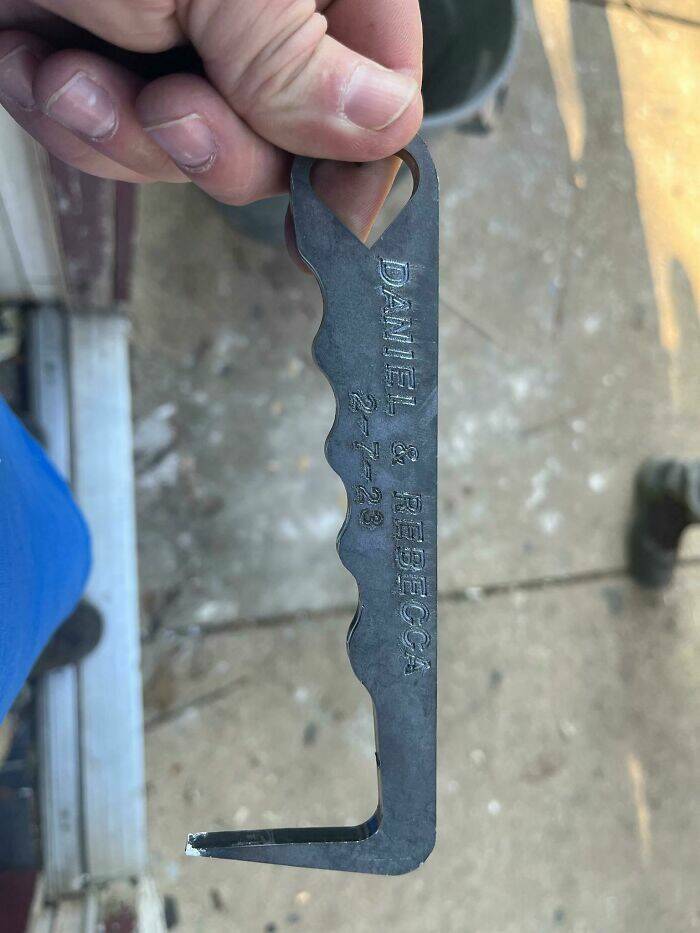"Steel, Engraved, Hooked Tool Hidden In The Foundation Of An Old House"

Answer: "My wife says horse hoof cleaning tool, and she's a major horse gal. Also, burying an iron object within the foundation of a home was once considered good luck."
6.

Sibbie 2 year s ago
#34 when notched, the disk could be written. single-sided disks only had a notch on one side. adding a notch on the opposite edge, made the disk writable at both sides.
5¼"disks came with stickers to cover up the notch to make them read/only again.
So the thing in not for write-protecting; quite the opposite actually.
5¼"disks came with stickers to cover up the notch to make them read/only again.
So the thing in not for write-protecting; quite the opposite actually.
7.

Hester 2 year s ago
Sibbie,
Second this. Notch = writable, no notch (stick some tape or the like over it), write protected. If you wanted to use the back side of a single sided disk you had to punch three holes in the plastic housing, the write protect notch and two that would line up with the hole that marked the start of the track. We usually made a cardboard model of a disk to guide the punches as it required a fair degree of precision.
Single-side floppies were far cheaper than dual side, but at least by the time I was on the scene the chances of a failure on the back side were very low. I would guess we lost more due to not being careful enough when punching the sync holes than were bad from the factory. (One jaw of your punch had to go inside the housing and the disk was easy to scratch.)
Second this. Notch = writable, no notch (stick some tape or the like over it), write protected. If you wanted to use the back side of a single sided disk you had to punch three holes in the plastic housing, the write protect notch and two that would line up with the hole that marked the start of the track. We usually made a cardboard model of a disk to guide the punches as it required a fair degree of precision.
Single-side floppies were far cheaper than dual side, but at least by the time I was on the scene the chances of a failure on the back side were very low. I would guess we lost more due to not being careful enough when punching the sync holes than were bad from the factory. (One jaw of your punch had to go inside the housing and the disk was easy to scratch.)










Cabbage sliced for making sauerkraut.
5¼"disks came with stickers to cover up the notch to make them read/only again.
So the thing in not for write-protecting; quite the opposite actually.
Second this. Notch = writable, no notch (stick some tape or the like over it), write protected. If you wanted to use the back side of a single sided disk you had to punch three holes in the plastic housing, the write protect notch and two that would line up with the hole that marked the start of the track. We usually made a cardboard model of a disk to guide the punches as it required a fair degree of precision.
Single-side floppies were far cheaper than dual side, but at least by the time I was on the scene the chances of a failure on the back side were very low. I would guess we lost more due to not being careful enough when punching the sync holes than were bad from the factory. (One jaw of your punch had to go inside the housing and the disk was easy to scratch.)
I think you mean seat covers not toilet paper